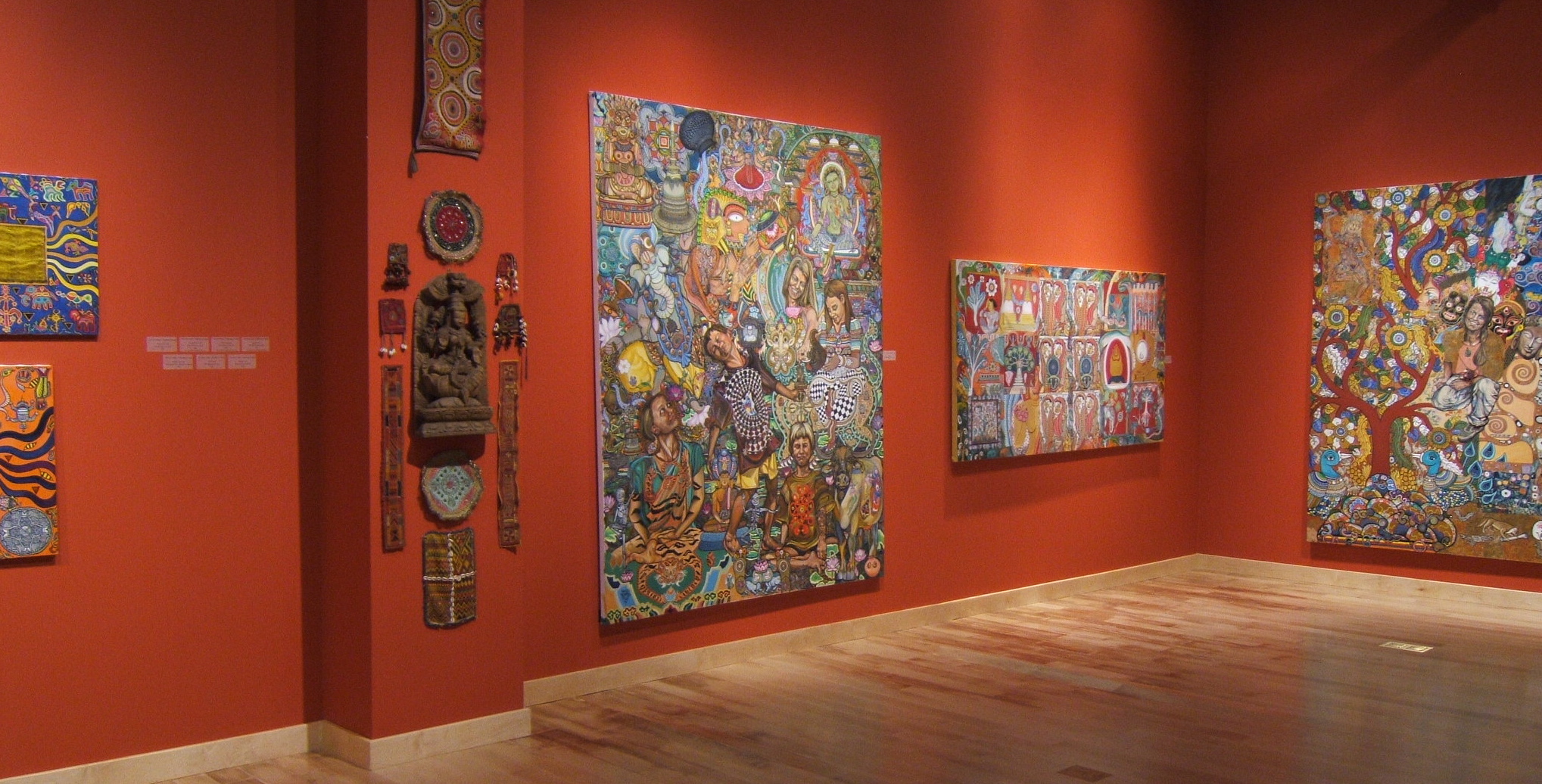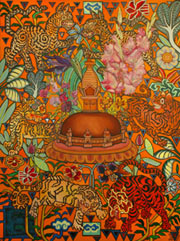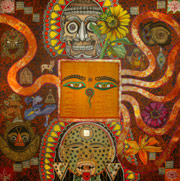Although Jane attended the College of William and Mary (double BA, Fine Arts and English, 1980), the University of Exeter, England (Study Abroad Exchange, awarded 1978-79), and Virginia Tech (MA, English, 1983), her study as a student of South Asia and its art has happened largely independently, through decades of travel and the gathering of her own reference library.
Paintings by Blacksburg, Virginia artist Jane Vance Siegle are spiritual stories. Jane specializes in linen and oil paintings from East and West.
Jane’s Paintings quote from many regional styles and traditions. Tibetan Buddhist thang-kas, the Mithila art of Bihar, India and the Nepali Terai, Kalamkari designs, and the Theravadan cave paintings of Sri Lanka are all in Siegle’s art.
Her art is influenced by her many travels, especially to South Asia. In Jane’s paintings you’ll recognize the vivid iconography of Tibetan Buddhism, Hinduism, and the folk arts of the Subcontinent as well as the Appalachian Blue Ridge Mountains.

Artist statement
My paintings place different cultures in relation to one another—the “high” culture of formal art and the “low” culture of daily practice, but also these spheres in American, European, African, and especially South Asian cultures. Given the residue of imperial history in contemporary life, it has not always been easy to shift these relations from hierarchy to dialogue, nor has it been easy to include in that dialogue voices that are usually off to the side, at best, both here and abroad.
Part of my decision to work outside academia, both as a painter and as a communicator, comes out of my desire to learn from those who aren’t often asked, and to speak, back in America, to those who live outside the richest and densest flows of ideas, images, and scholarship from other places. In my travels, I have spent as much time with Rajasthani hand-painters as with Sri Lankan exhibitors, and I have spent more time with what we in the west typically call “craftsmen” than with those who fill the galleries and contemporary art museums of South Asia-the latter’s works suggest a different and equally valuable project, but distinct from mine.
As a traveler, I have relished my days with school children asking questions about my paintings and my asking them about theirs; my memories are of tea shared with aged nuns, of meals and temple visits with taxi drivers, of conversations on the lawns of the Lodi Gardens with sweepers and retired contractors. I learn as much from clay and cloth workers at New Delhi’s National Crafts Museum as I do from the new masters of formal painting. On my return, I make paintings like the ones that accompany this proposal, full of birds and flowers, pots and iconography, west and east, elite and common; I also take my paintings to galleries and schools, showing the school children of Appalachia tapestry and metal work, silk paintings and tabla rhythms, words and ideas that would otherwise remain utterly foreign in their diet of television and Playstation. I speak to university students and to the contemporary incarnations of the classic Chatauqua conferences where citizens discuss new ideas together in community settings, and I collaborate on video projects that air on public television.
– Jane Vance Siegle


